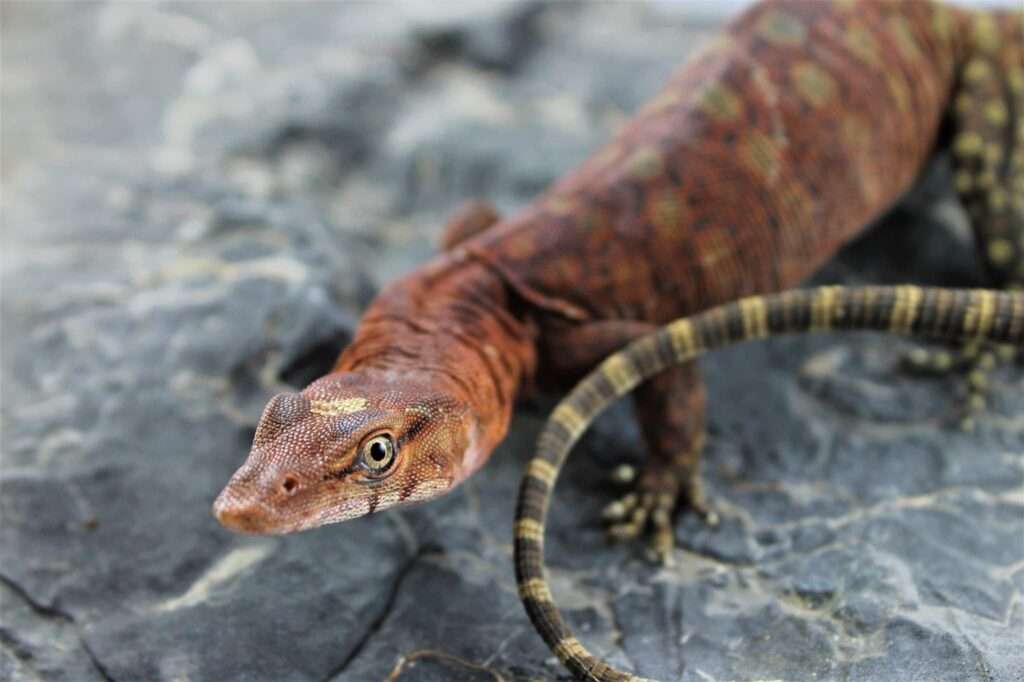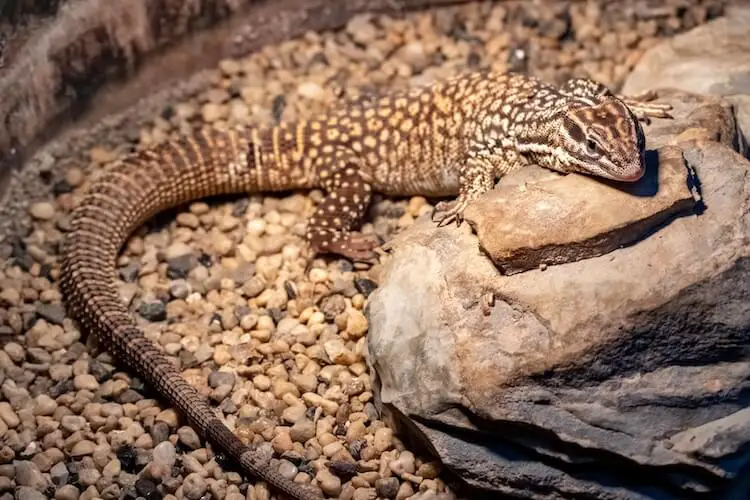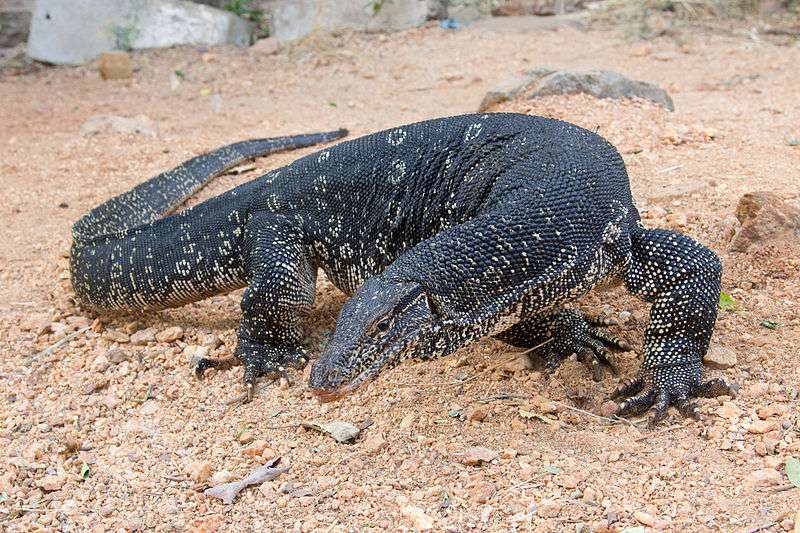
Description:
Scientific name: Varanuas pilbarensis
Life span: Up to 20 years
Pilbara rock monitors are mostly reddish in color and prefer a rocky environment. Their entire length is less than 470 millimeters. Varanus pilbarensis tails are rounded, with strong band patterns along the length of them, can be up to double the length of the snout to vent measurement, and have black and cream stripes near the end. This species may be distinguished from its close relatives by an arrangement of spiky and comb-like scales close to the base of the tail, as well as by the high position of the nostrils on the snout. The feet feature small, robust, highly curled claws, and the legs have black and cream spots. On the upper surfaces of their loose skin, there is a succession of light grey eye-like markings in the scales, in the back, and on the neck.
Native Region/Habitat
They only exist in the Pilbara area of northwest Australia. The Pilbara rock monitor loves to reside in rocky outcrops, where it may find refuge in the many narrow niches and tangles of escape routes.

Behavior:
The Pilbara rock monitor is remarkably simple to work with despite being a rather uncommon specimen in captivity. They are incredibly resilient and inquisitive monitors that frequently walk about their cage without being alarmed by an excited hobbyist’s presence. Pilbara rock monitors consume insects and tiny lizards in their natural habitat. They flourish in captivity eating rodents and insects and getting lots of calcium
Care As a pet/In captivity:
The enclosure size can be 150 cm long, 60 cm wide and 90cm high. Hides must be given both high up and low down; cork tubes are good for this, but many other materials can be employed. Every day, fresh water should be delivered in a clean dish. Having a substrate that is at least 30 cm thick will greatly aid in maintaining high humidity levels. One nice, proper-wattage bulb can be used as a basking spot and be focused onto a limb, rock, or slate. Prey items begin tiny while young, such as medium crickets and Turkistan roaches, then expand to offer larger prey such as mature male dubious and locusts.
Table





